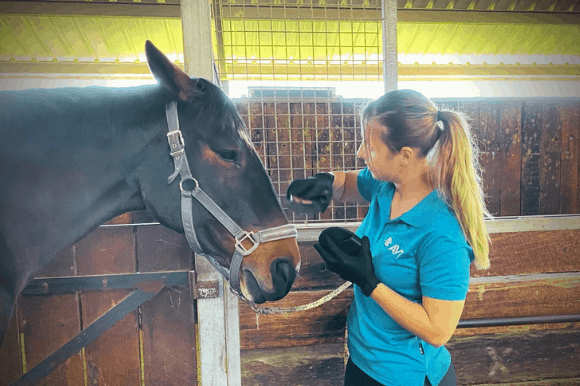Action
The way a horse moves its legs is referred to as action and this can be a good indicator if the horse is suitable for your use. To be able to identify defective action in a horse, it is important to understand the normal movement of a horse at different gaits. A horse has four basic gaits; walk, trot, canter and gallop. These are considered natural gaits that most horses have, without any special training. Each of these gaits have a set rhythm and way of moving, with the horse’s legs moving in a consistent pattern at a steady speed. Once you are able to identify these gaits and what is normal for each, you can then look at this in the context of the intended use of the horse. You will then be able to determine if the horse’s gait is suited for the main activity to be carried out with your horse. Having a fresh set of eyes look over a horse you are considering for a specific purpose is always worthwhile. This may be a coach who knows what is required for your chosen discipline or a vet who is trained to identify gait issues.
Horse breed and parentage in Australia
While there are hundreds of different horse breeds in Australia, they are classed into four general types.
- Hot bloods (eg. Arab and Thoroughbred)
- Warm bloods (carriage and sport horses)
- Cold bloods (draught horses such as Clydesdales)
- Ponies (eg. Shetland and Welsh Mountain Pony)
Different breeds of horses have distinctive physical characteristics, including average height and size, temperament and conformation.
We know that general traits are passed from parents to offspring because horses tend to retain these characteristics regardless of the environments in which they live. The monetary value of a horse can often be influenced by its parentage.
If there is a proven history of the desired traits and characteristics being passed on to offspring, from either the stallion or the mare, this can influence how much a person is prepared to pay for a foal in the hope that those characteristics and abilities are replicated and can go some way to guaranteeing success in the owner’s chosen discipline.
It is important to remember that not all characteristics and athletic abilities will be passed from parent to offspring, as the environment in which a horse is kept can also have a significant effect on its athletic ability and temperament.
How to choose a horse breed for a beginner
When choosing a horse for a beginner, safety should always take precedence over breed considerations. While certain breeds may be known for their suitability for beginners, individual temperament and experience level are more critical factors. Additionally, it’s essential to consider the activities the beginner hopes to pursue with the horse. For example, a beginner interested in trail riding may require a different type of horse than someone interested in jumping or dressage. Matching the horse’s temperament and skill level to the rider’s goals and abilities is key to a successful partnership and enjoyable experience.
Recommendations from friends or trusted individuals who are knowledgeable about horses or ponies for sale, especially those with a known history and temperament, can be invaluable. They can provide valuable insights and help you find a horse that matches both your skill level and your intended activities.

